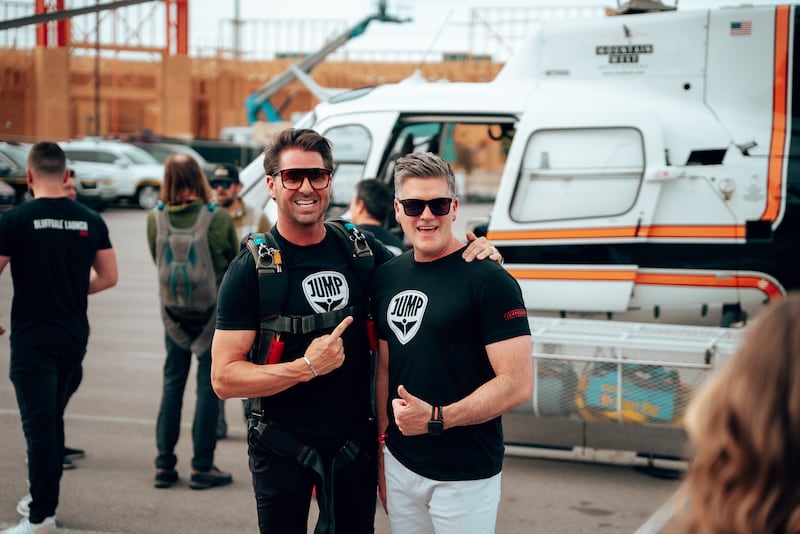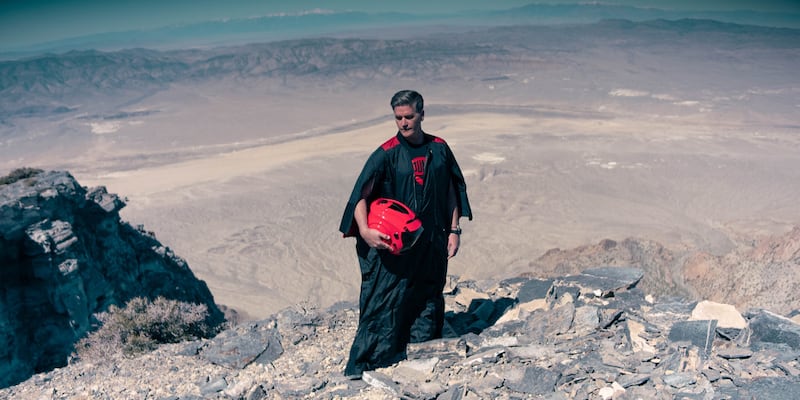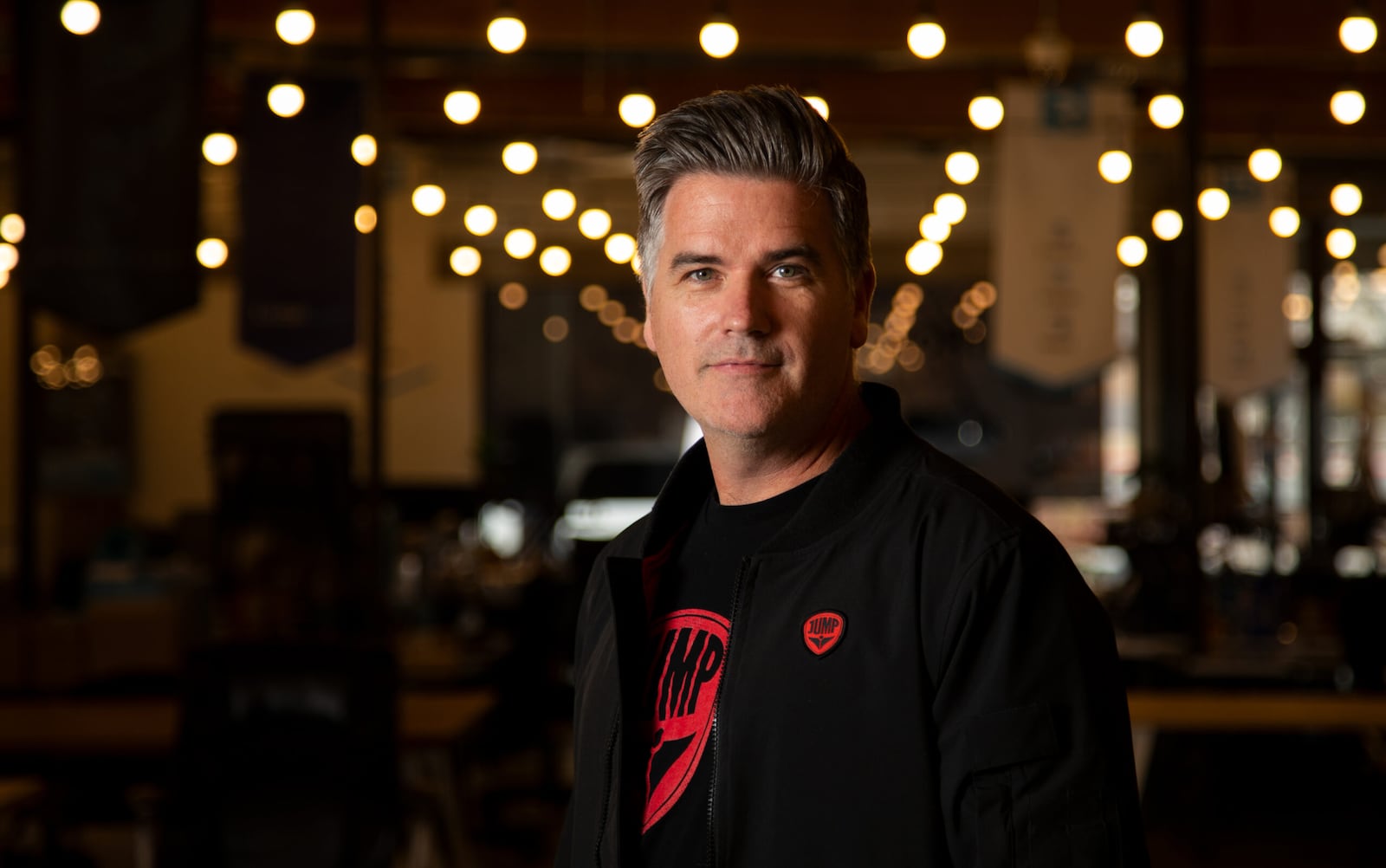Iwas born in Sandy, Utah, but shortly after that, my family moved to a mint farm in Oregon, where we lived until I was about 12 years old. My grandparents were the suppliers for Wrigley’s mint. On the farm, I learned how to ride a motorcycle at age six and drive a tractor when I was eight years old. We moved back to Utah when I was 12, and I’ve been here ever since.
My father was a farmer, but he was also a gifted landscape oil painter. He taught me to paint with oils when I was about 10 years old. I remember winning an award in sixth grade for my first oil painting of mountains, pine trees and a little river. I continued down the artistic path and ended up illustrating some books and diving into airbrushing and photorealism.
I became an entrepreneur when my brother bought me my first airbrushing kit when I was 12 or 13. With that kit, I started airbrushing T-shirts for movie theaters. I was making $100 bucks for 20 shirts. I received half the money upfront, and once I got halfway through the project, I really didn’t want to finish it. My dad then said something to me I’d never forget: “James, your reputation will be worth way more to you in the future than any amount of money you’ll ever make, so you should probably finish the project.” I’ve kept that idea through everything I’ve done.
Getting into computer animation
As a young artist, I was contracted by a couple of design firms to work on book covers and things like that. One of those design firms showed me a computer animation machine, a crazy computer that was running Softimage. They asked, “Hey, do you know anybody who knows how to run this? If so, we’d love to talk to them,” and I said, “I’ll run it.” I was probably 19 at the time.
I took home all the books and decided I was going to teach myself how to run the machine. I worked for that firm off-and-on for about three months. They then started charging clients to do some of my work. That’s when I got into computers and computer animation visual effects.
I worked for a couple of other design firms, including Candesa Interactive, where we did a lot for Novell, Microsoft and Sony Entertainment building websites, animation and video games. From there, I started my own company, Sandman Studios, a design firm that did visual effects and web development. We did a lot of sets for films, including green screen sets for “Scooby-Doo 2: Monsters Unleashed.”
At the time, the Oculus Rift DK2 VR headsets had just barely came out. By now, I really wanted to be inside the computer and imagined what it would be like to be in a physical environment I could turn into anything. I built a few business plans around that and tried to get a couple of larger theme parks excited about the idea, but I never really had good connections there.
In 2014, I met Ken Bretschneider, who was building Evermore Park. I finally had an opportunity to talk to somebody interested in an attraction where you’re mapping a virtual or physical world. That’s how the technology side of it started. I was already in tech for film and video, but virtual reality was the next level; to be immersed inside of the environment instead of just watching it on a screen.
At Sandman Studios, I started building a lot of really cool concepts for other businesses. I started thinking, “Man, I have great business ideas too. I should build some of my ideas and make them look beautiful just like we do for our clients.” That’s when I got into building my own products, a lot of which were around web applications in game development. That’s where The VOID originated.
The VOID was a walking virtual reality simulation company. We had relationships with Disney and Sony and ended up having over 20 locations worldwide. With The VOID, we were doing virtual reality simulated environments mapped over physical sets on stage with actors—something I learned from the film and video world. We built “Ghostbusters” and “Star Wars.” We got to be an Avenger and fight this big robot. We built some of our own content, such as “Wreck-It Ralph” and “Jumanji.” I thought it was the movie theater of the future, and now there are a bunch of spin-off companies that are doing similar things.
The VOID is coming back with something new, but I’ve since moved on from there. I saw a massive opportunity to do something more meaningful than just entertain people. That’s where we get to JUMP by Limitless Flight, a wingsuit BASE jumping experience that’s a one-to-one reality.
At JUMP, you put on a wingsuit and a parachute, dive out of a virtual airplane or off the cliff, fly a wingsuit, pull your parachute and land. That’s been a really fun experience for people to have and a potentially pivotal moment in a person’s life if they’re dealing with fear or limiting beliefs of any kind.

Your relationships are everything
Someone recently asked me, “When you started Sandman Studios, did you hire people for the technical stuff, or did you learn it all yourself?” I did hire people. This goes back to my dad’s advice: “Your reputation is worth way more than any money you’ll ever make.”
From as early as when I started airbrushing T-shirts throughout my career, I always kept as good relationships as I could with any of the developers, artists and programmers I came into contact with through all of my companies. When I did get the resources to build The VOID, I already had guys ready to go. I had been telling them for years about this crazy idea I wanted to do, so it was this easy process of, “Hey guys, remember that? Well, I have the money to do it now.”
I hired the talent to come in and build the first versions of JUMP, as I’m no longer a programmer. I left The VOID in 2018, and they brought on new management. They opened a few more locations, and then Covid happened. They lost their locations and relationship with Disney. When I left, I immediately switched gears into JUMP. I had that carved out in my agreement that it was noncompetitive, and I was taking the IP with me. They didn’t care at the time.
One brand that was excited about the new idea was Red Bull. That reignited a fire underneath me to make it happen. There was also a project in between called Sensync, where I worked with scientists to build a sensory pod for relaxation and brainwave function. We built an amazing product around that and it was deployed out of the Four Seasons hotel in Honolulu.
How I got the idea for JUMP
In 2016, I was on a family trip at a resort in Utah and we set up a screen for the kids to watch movies. My buddy Marshall Miller, a professional wingsuit BASE jumper, was with us. He pulled out his hard drive and hooked up a video of him in a wingsuit BASE jumping in Sweden somewhere. I thought, “Oh man, I want to do that so bad.”
My wife was right there, and she said, “You’re never going to do that.” At that point, I thought, “Wow, I know how to make things feel very realistic in hyperreality simulation. Why couldn’t we make a hyperreality simulation the same as the real thing in wingsuit BASE jumping?” That way, anybody could have the BASE jumping experience not attainable for 99.9 percent of the people on the planet. Only about 1,000 people BASE jump in the real world. Being able to deliver that experience to everyone was a great opportunity. That’s when the conversation started.
We built some designs in 2018 and got our first round of seed capital at the end of 2019. We built the prototype over what I call the “Covid break” that 2020 brought with our engineers out of Pennsylvania. We built a prototype that was a little strapped together, but it was sufficient enough to raise the next round of funding.
So, how we make sure the JUMP experience is like the real thing? Marshall Miller, who has done over 10,000 real-life jumps, is on our advisory board. Other professionals have come out and helped us refine the JUMP experience, including Hartman Rechter, a professional wingsuit BASE jumper. He’s one of our lead programmers who programmed all the physics.
Our goal at JUMP was to reach the highest level of real-life BASE jumping, but we realized nobody would fly that, so we put a bunch of training wheels in the system—cap out your roll, cap out your pitch. We also put bumpers on the surfaces so a beginner can’t really crash. Over time, they can take off the training wheels and get to the high-end wingsuit that Hartman created. You don’t come in here and fly the super-freak wingsuit the first time; you fly a beginner wingsuit that has a really good glide ratio and doesn’t let you run into stuff.

My career as an entrepreneur
I’ve been an entrepreneur for 20-plus years. JUMP has won the 2022 Thea Award for outstanding achievement in immersive/themed customer experiences, which is such an honor. I know people talk a lot about ownership in your company and strategically preserving that ownership, which is very important, but it’s also important to raise money. You need resources to do things and convince people to work with you. Some of the biggest lessons I’ve learned have been through the process of working with different corporations and VCs versus private investors and angel investors.
Going into entrepreneurship, you need to realize you’re going to fail at some level. You might not ultimately fail at something, but you’ll always have a learning experience. If you’re going into it thinking you’re going to knock it out of the park the first time, that’s pretty rare. To a new entrepreneur, I would advise going into it knowing that you will probably see some really good success but that you’re also going to learn a lot from failing.
The one big learning experience I had with The VOID was being too attached to the idea. When it was taken away from me or distorted or changed, it was very painful. I know that JUMP is not going to be my life forever. I’m 47 years old and am probably going to have a few other ideas that are going to be really cool. JUMP is just another stepping stone to whatever is going to be the next big thing. I look at a business like a door. Once that door opens up, there’s the next opportunity. You can either choose to go in that door, or maybe you’ll get forced into a different area. But it can be incredible, so enjoy the flight wherever it takes you.

